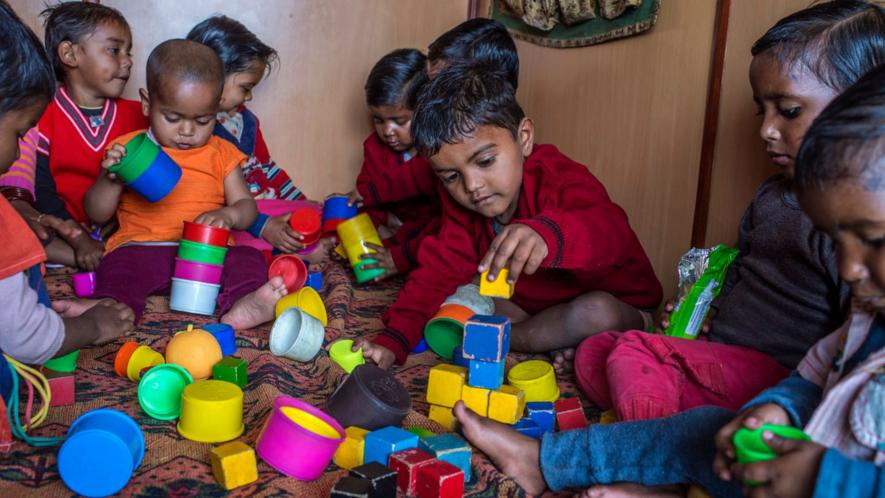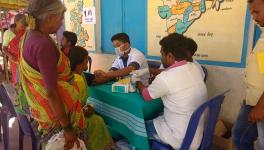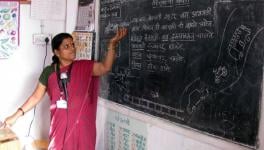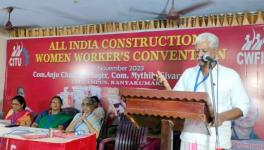Steep Fall in Number of Creches From 25,000 in 2013 to Only 3,900 in Feb 2023: Report

Representational Image. Image Courtesy: Flickr
New Delhi: At a time when crores of rupees are being spent on highways, expressways, bridges, tunnels etc. making for picture perfect postcards, the money spent to provide creches to the poor children of working mothers has plunged from Rs 8.68 crore in 2022-23 from Rs 96.23 crore in 2013-14, says a report. Also, the number of creches has dropped from nearly 25,000 in 2013-14 to a mere 3,900 in 2022-23 across the country.
“In 2013, there were almost 25,000 creches, with over 6 lakh beneficiaries under the National Creche Scheme. By February 2023, there were just 3,900 creches with under 84,000 beneficiaries,’ says a report in the Times of India.
The National Creche Scheme, mainly to take care of infants and small children of poor working women, especially on construction sites etc, is a Centrally-sponsored scheme run by the Ministry of Women and Child Development, now headed by Union Minister Smriti Irani.
The scheme, earlier known as the Rajiv Gandhi National Creche Scheme, aims to provide day care facilities to children in the age group of 6 months to 6 years of working mothers. The facilities covered under the scheme include providing sleeping space, supplementary nutrition, health check-up and immunisation among others.
The report cited several studies and research pointing to the need of more creches for lakhs of such poor children to prevent malnutrition as well as push up the work participation rate of women, which is “notoriously” low in India.
The report points at a number of factors at play in the drastic decline in the number of creches. First among these is the funding pattern, which was 90:10, with the Centre pooling in 90% of the funds and the NGOs running these putting in 10% of the funds, says the report.
After the Centre cut off funding following allegations of corruption on some NGOs, the running of these creches was given to the Central Social Welfare Board.
“Around the same time, in January 2017, the funding formula was revised. The implementation was shifted to state governments following an increase in the share of union taxes for states from 32% to 42% in keeping with the recommendations of the 14th Finance Commission. The fund sharing pattern amongst Centre, states and NGOs was changed to 60:30:10. It was 80:10:10 for northeastern states and 80:0:10 for Union territories,” says the report.
Since not all states were on the same page on finances, funding shrank till most creches shut down during the pandemic.
The report also pointed out the steep fall in fund utilisation was whatever budgetary allocation was made for the scheme, leading to a huge decline in the number of beneficiaries.
“From over 87% of budget allocation being used in 2013-14, fund utilisation steadily worsened till it was less than 29% in 2018-19. That led to a slash in allocation from the Centre,’ it said. The fund utilisation in 2022-23 was a mere 8.6%.
Net, net, several states that had a number of creches now have none, including states with the highest number of births, such as Uttar Pradesh and Bihar. UP had 2,149 creches with over 50,000 children in 2013, Bihar had 23,000 children in 930 creches, as per a written reply by the WCD Ministry to Parliament cited by the report.
After the pandemic, when the WCD Ministry renamed the scheme as ‘Palna’ under the sub-scheme ‘Samarthay’ of Mission Shakti that aims to strengthen women’s safety, security and empowerment, “the anganwadi-cum-creches were moved to the Palna scheme and existing creches under NCS were included as stand-alone creches.”
However, the Palna scheme seems to be ‘struggling to get off the ground, says the report, adding that there were barely 2,200 functional stand-alone creches as of October 2023 and approval given for 5,000 anganwadi-cum-creches.
The ToI said it sought a response from the WCD Ministry and would update the story once it was received.
With some states already complaining about MGNREGA funds’ release from the Centre, wherein quite a large number of women workers get 100 days of work, squeezing of allocations for creches could impact the already poor work participation of women and the goals of gender equality and empowerment.
Get the latest reports & analysis with people's perspective on Protests, movements & deep analytical videos, discussions of the current affairs in your Telegram app. Subscribe to NewsClick's Telegram channel & get Real-Time updates on stories, as they get published on our website.
























